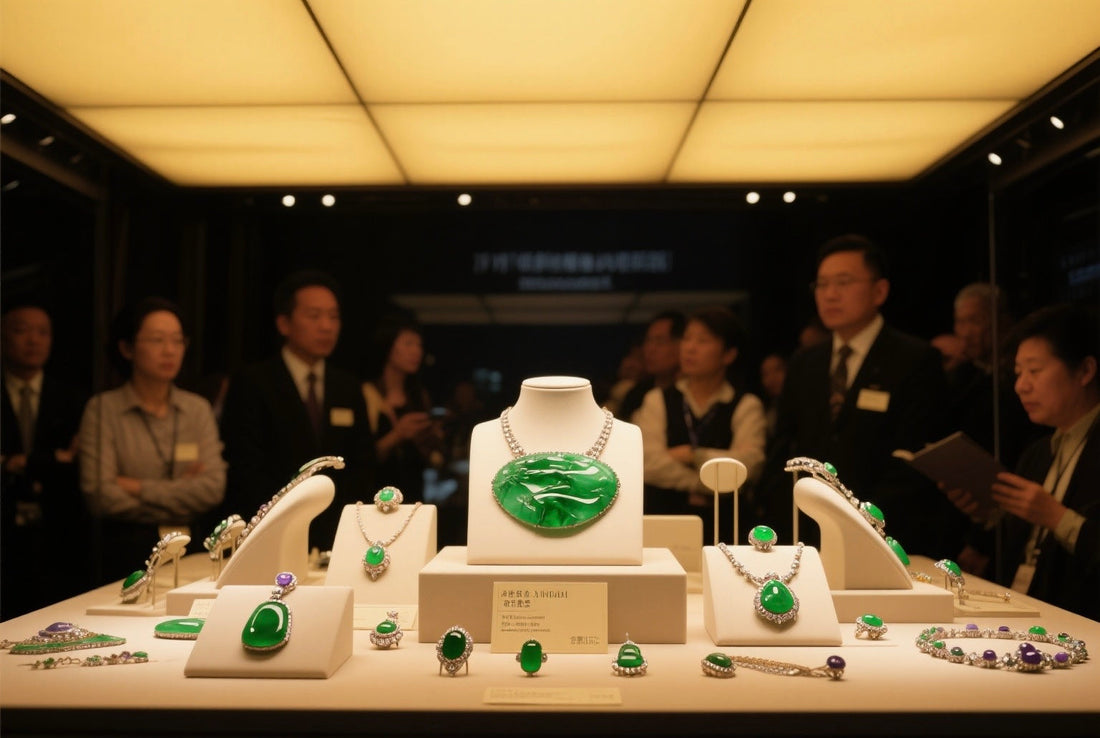
The Jadeite Investment Landscape: Why Top Pieces Fetch Millions
In 2014, a jadeite necklace—once designed by Cartier—sold for over $27 million USD at a Sotheby’s auction in Hong Kong.
No diamonds. No rubies. Just pure jadeite beads.
To many Western collectors, this might come as a surprise.
But in the East, fine jadeite has long been considered a symbol of not just beauty—but wealth, legacy, and power.
✦ Jadeite as an Asset: Stability in a Shifting Market
Unlike many other gemstones, top-grade jadeite rarely depreciates. Why?
- True scarcity: All high-quality jadeite comes from a small region in Myanmar. Mining is tightly restricted and politically unstable. Each year, less and less fine material enters the market.
- Cultural demand: In Chinese culture, jadeite is more than jewelry—it’s a spiritual protector and generational heirloom. Families often pass down bangles, pendants, or beads as blessings.
- Non-standardized pricing: Unlike gold or diamonds, jadeite is not traded as a commodity. Its value depends on unique features—meaning truly exceptional pieces are irreplaceable.
This makes jadeite attractive not just to collectors, but also to investors looking to preserve value in volatile times.
✦ Auction Houses Know the Value
Major auction houses like Sotheby’s and Christie’s have long recognized jadeite as a category worthy of global attention.
- In 1997, The Doubly Fortunate Necklace (27 flawless imperial green beads) sold for $9.3 million USD.
- In 2014, it resold for $27.4 million—tripling its value in under 20 years.
- High-quality bangles and carved pieces regularly command six- to seven-figure prices in Hong Kong, Taipei, and Beijing.
These sales are not just flukes—they reflect a deep and expanding collector base, particularly among the Chinese diaspora and spiritual luxury buyers.

✦ Beyond Investment: Jadeite as Cultural Capital
To truly understand jadeite’s long-term value, one must look beyond numbers.
In many Asian cultures, jadeite holds:
- Spiritual significance: believed to protect health, attract harmony, and absorb negative energy.
- Status signaling: In traditional society, only the elite could wear certain grades of jade.
- Cultural continuity: Owning fine jadeite links the present to ancestral heritage and philosophical traditions.
For this reason, jadeite is often considered “cultural capital”—a tangible asset that holds emotional and symbolic weight, not just financial value.
✦ A Final Word: Invest with Intention
At TATHATĀ, we believe jadeite is more than an investment—it’s an inheritance of spirit and story.
Whether you’re building a collection or choosing a single meaningful piece, understanding what makes jadeite valuable allows you to invest not only with strategy—but with soul.
In the next article, we’ll explore how jadeite’s origin and traceability are shaping the future of ethical collecting and authentication.
